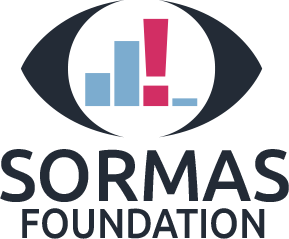Frequently Asked Questions (FAQ)
SORMAS is an acronym for “Surveillance, Outbreak Response Management and Analysis System”.
Yes, SORMAS is free (in the sense of freedom of use) and open source.
The project is published under the GPL3 license.
It is essential to understand that there are implementation costs associated with the deployment and use of the system.
Such costs include customization, training, infrastructure, support and maintenance, and data security provisions.
These costs are not related to the licensing fees, as the software is freely available for use.
DHIS2 (District Health Information System 2) and SORMAS (Surveillance, Outbreak Response Management and Analysis System) are both health information systems, but they serve different purposes.
DHIS2 is primarily a health management information system (HMIS) designed for the collection, analysis, and dissemination of health data. It is widely used for health information management, reporting, and monitoring at various levels of the health system, from local to national.
SORMAS on the other hand focuses on disease surveillance, outbreak response management and analysis, to facilitate epidemic and pandemic response. It is designed to support the monitoring and control of infectious diseases, providing a task management system, tools for case-based reporting and case management, contact tracing, infection visualization chains and outbreak response.
DHIS2 is more general and geared towards overall health information management, while SORMAS is specifically tailored for disease surveillance and outbreak response in the health sector.
Yes, SORMAS has been designed with interoperability in mind to exchange data with other relevant systems, such as laboratory information systems (LIMS), electronic health records (EHR), and national health databases.
It provides an API that allows for interoperability with other systems.
Further information on the SORMAS API can be found on github.
Yes, it can be used on mobile devices and tablets via the mobile app version, as well as on the web browser via the web application version.
The system recognizes the importance of flexibility and mobility in responding to disease outbreaks, thus health workers can access and input data directly from their mobile devices.
The mobile app is available for download in the SORMAS Github Repository.
Yes, SORMAS is designed to be used in environments with limited or no internet connectivity. The mobile app can be used to gather data while offline and is particularly important in scenarios where disease outbreaks may occur in remote or underserved areas with unreliable internet access.
Data is then synchronized once the device has an internet connection.
Yes, SORMAS is adaptable to specific needs and requirements of different countries. The flexibility of SORMAS allows for customizations that accommodate varying contexts, healthcare systems, and public health priorities of different countries.
It can be adapted to incorporate specific disease surveillance protocols, reporting requirements, and public health response strategies. Key features that enable this adaptation are modular design, configurability, localization, interoperability, scalability.
We encourage countries to work closely with the SORMAS Foundation to benefit from the collaborative guidance and latest features already available in the main branch of the platform.
The data collected in SORMAS is stored in a centralized database which allows for efficient management, analysis, and coordination of information related to disease surveillance and outbreak response.
The database’s specific location depends on the country’s decision and is based on the deployment and configuration of the system in the country’s setup.
There are over 40 disease modules in SORMAS, including case-based and aggregate.
The complete list of disease modules in SORMAS can be found on github.
Setting up of a SORMAS national or regional system can be done ranging from a few days to a few weeks.
This can vary depending on various factors, including the size and complexity of the public health system, the level of existing infrastructure, and the specific requirements of the implementation.
This generally involves the following steps; assessment and planning, installation and configuration, training, pilot phase, and roll out.
The cost of implementing SORMAS in a country can vary significantly based on several factors.
The cost considerations for such factors may include but not limited to: scale of implementation, infrastructure requirements, customization and integration, training and capacity building, maintenance and support, collaboration with developers, and regulatory compliance.
No direct cost for the SORMAS software is required as it is open-source software (refer to FAQ number 2).
The Total Cost for Ownership (TCO) Tool developed by PATH is useful for countries when planning to implement SORMAS.
The SORMAS Academy (Currently under construction) is the official go-to platform for all training and materials.
You can also access training information or materials via the SORMAS Community platform, to access discussions, shared resources, and information on other training opportunities.
SORMAS enables routine disease surveillance, early detection of disease outbreaks and epidemic/pandemic control management.
Key features include digital real-time and multi-directional data exchange between beneficiaries across national and regional borders.
SORMAS is based on the Integrated Disease Surveillance and Response (IDSR) framework and includes indicator- and event-based surveillance, with features such as contact-tracing, laboratory, automatic document generation and task management.
It can be used online and offline, in its web or app version and follows the European GDPR data protection regulations.
Yes, SORMAS can support One Health approaches, especially through the newly developed environmental surveillance module, which further enhances its integrated surveillance and response efforts across the human and animal health domains.
For further information on the environmental surveillance module, you can check this webinar recording.
The SORMAS Foundation provides technical support for countries that want to implement SORMAS by offering life demonstration of the systems, maintaining a public demo system, offering an exchange community platform, answering questions via email or meetings.
Further technical support is provided in the frame of implementation projects. This includes needs assessment, trainings, support with the configuration of the system and third level IT support.
SORMAS can be used both for small and large-scale outbreaks, epidemics and pandemics.
It is a comprehensive digital solution developed to enhance disease surveillance, outbreak management and response in public health. Its key features ensure that the system is relevant for routine surveillance, outbreak management settings, and research purposes.
It has been employed in response to various infectious diseases and outbreaks in different parts of the world, including the COVID-19 pandemic.
SORMAS is not specific to a particular country or region and can be tailored to the specific needs, requirements, and public health infrastructure of different countries or regions.
While the system has been implemented in several countries, it is designed to be adaptable and customizable to different contexts and healthcare systems, including Low- and Middle-income countries (LMICs) as well as HIC (High Income Countries).
The SORMAS data protection and security concept follows the European data protection regulations (GDPR).
It includes anonymization, pseudonymization and data deletion, subject to countries. In addition, regular data and system security measures are applied.
Furthermore, the system can only accessed according to granular user rights defined by countries.
For further information on data protection and security in SORMAS, please check the github repository.
SORMAS has been used globally in about 15 countries, in different stages and scales, and for different response approaches to surveillance, small and large outbreaks, and the COVID-19 pandemic.
Currently, SORMAS is being used in Nigeria nationwide since 2017, Ghana nationwide since 2019, Luxemburg nationwide since 2024, Nepal in 5 provinces since 2020.
During the COVID-19 pandemic, SORMAS was rapidly deployed in Switzerland, France, Fiji and Germany. Pilots and studies have also been/are carried out in countries such as Afghanistan, Tunisia, Côte D’Ivoire, Tanzania (Zanzibar), Democratic Republic of Congo, Djibouti, and Kenya.
The SORMAS Foundation was established in 2022 and has taken on the responsibility of facilitating global collaboration among the SORMAS community members, ensuring the software’s high quality standards, engaging in capacity development, offering technical assistance for the sustainability of SORMAS implementation in countries and regions, and the long-term success of the SORMAS platform in various countries.
The SORMAS Foundation’s vision is “a world in which all countries are prepared to respond to epidemics and pandemics digitally and collaboratively”.
Yes, SORMAS is recognized as a mature digital health software global good, as defined by Digital Square.
According to this definition, a mature digital health software global good is software that is free and open source, is supported by a strong community, has a clear governance structure, is funded by multiple sources, has been deployed at significant scale, is used across multiple countries, has demonstrated effectiveness, is designed to be interoperable and is an emergent standard application.
For more information on the Global Goods, please check the Global Goods Guidebook.
SORMAS fulfilled the Global Goods Maturity Assessment for the first time in 2019.
Yes, SORMAS is a Digital Public Good.
According to the UN Secretary General’s Roadmap for Digital Cooperation, Digital Public Goods are: “open-source software, open data, open AI models, open standards and open content that adhere to privacy and other applicable laws and best practices, do no harm, and help attain the SDGs.”
SORMAS contributes to the Sustainable Development Goal (SDG) 3, regarding “Good Health and Well-being”.
You can find the SORMAS entry at the Digital Public Goods Alliance Registry.
Target beneficiaries are personnel involved in the control of epidemics from the community level to the ministry of health, including health staff at Emergency Operating Centres (EOCs), hospitals, points of entry, laboratory technicians, community health workers, surveillance officers, case and contact supervisors, among others.
The primary repository for SORMAS can be found on the GitHub page of the SORMAS Foundation.
The GitHub repository provides access to the source code, documentation, and other resources related to development of SORMAS as software.
As an open-source software, SORMAS ‘s source code is publicly available on github.




